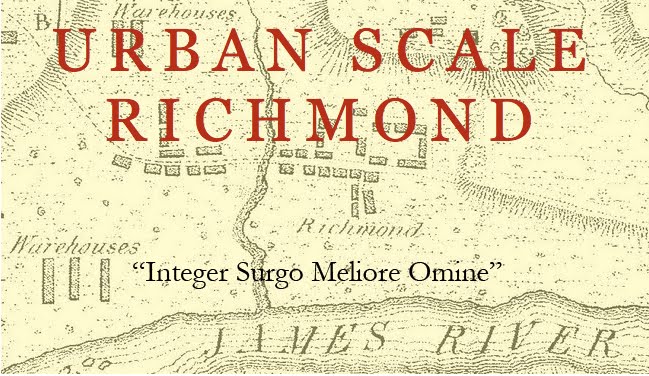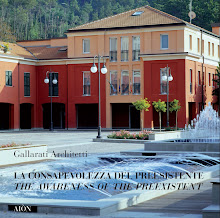Veritas School was founded in 1998 to restore a vision of classical education in Richmond Virginia. In 2016, the school acquired the consistently classically designed campus of the former Presbyterian School for Christian Education, an education complex dating from the 1920s to the 1960s. North Hall, the former administration building stands at the end of a handsome quadrangle. Although built in the 1953, its exterior embodied the same classical spirit as the rest of the campus, while its interior was merely functional in detail and plan. Glave and Homes restored the exterior of the building and transformed the interior.
The achievement at North Hall was essentially that of stepping outside the world usually associated with high-end residential work and directly increasing the quality of architectural design in the civic realm without unduly increasing costs for the client.
Civic work is usually governed by commercial contractor relationships that default to conventional forms of classical expression. A higher level of architectural quality was achieved by intense and careful collaboration between architect and craftsman, aided by the flexibility of both contractor and client throughout the project.
 |
| Baskervill and Lambert Architects, Block Plan, Training School for Lay Workers, 1921. |
Veritas was founded as a classical K-12 Christian school, based in the study of the liberal arts. The campus was built in the first half of the 20th century as a women's school for Presbyterian lay workers. The campus master plan, a product of the early twentieth century architectural and urban planning movement known as the American Renaissance or the City Beautiful Movement, organized the individual buildings into a unified whole. The design not only represents the general structure of the school’s educational program but embodies the form of human knowledge and its relation to divine wisdom. Like Thomas Jefferson’s University, of Virginia, the campus plan also imitates the human body, with a head (chapel and administration), essential organs of perception and sustenance (library and dining hall) and appendages (dormitories) organized into a well-proportioned whole. Architects Baskervill and Lambert organized the campus buildings around three sides of a central lawn facing south towards Westwood Avenue.
 |
| North Hall under construction on 1953. |
Veritas School asked Glave and Holmes to rehabilitate an existing building for use as its new upper school. Gibson Worsham was the design architect for a new double-height entry hall to be carved out of the interior of the two-story building. The building benefitted from the kind of classical architectural planning and detailing for which Glave and Holmes has long been recognized. A carefully designed full-height entry hall and student gathering area inserted into the two-story interior seemed the best way to introduce students and visitors to school's classical ethos. In designing the campus, we followed the following principles:
- Classical education is based in the idea that knowledge is structured in a way that is both intelligible and transferable. That structure can be taught to students in ways that are appropriate for different levels of intellectual maturity, enhancing their ability to absorb and synthesize ideas.
- Classical architecture, because it is based in the same ancient understanding of the truth, goodness, and beauty, can reinforce and direct students’ attention of the students and teachers toward the sources of wisdom.
- Classical buildings, because of their adaptable plans and universal appeal, are better able to respond to changes in use over time. A classically trained architect can recognize the important features in an existing building and ensure that it continues to orient the user in a way the underlines the educational models from which the school is derived.
 |
| Hall, Chicheley Hall, Buckinghamshire |
The precedent used by the original architects for the exterior of North Hall seemed to be the English Palladian country house. Several examples of these country houses incorporated two-story halls behind a conventional elevation incorporating two levels of windows, as we would need to do at North Hall. Examples at Chicheley Hall and Ombursley Court were particularly apt as precedents for the new interior. At Chicheley Hall, the height of the hall was mitigated by use of a one-story order, and the balustrade on top permitted a balcony on one side and a screen for the lower portion of the second-floor windows, while filtering the glare of their south-facing aspect.
 |
| Interior Rendering, North Hall Entry Hall |
The Entry Lobby at North Hall is intended to support the restoration of classical education at Veritas School through an analogy with the beauty associated with classical architecture and craft traditions. As a civilization, we lost track of these building ways at the same time and for many of the same reasons that we abandoned the tradition of classical education.
 |
| North Elevation, Entry Hall, North Hall, Veritas School. |
The initial specifications for North Hall called for a decorative use of wood that was intended to contributed to the character of the room as the lobby of a classical upper school. The trim was specified as an Ionic entablature running around the entire room. The high ceiling was to be crowned with a classical cove molding, although during design development decisions had not been made how the molding or entablature would be made and installed. Undiminished pilasters were closely flanked by piers (or "antae") that added visual support for the floor above and also served to conceal the existing concrete structural columns within. The piers had capitals that were directly based on and extensions of the Ionic pilaster capitals.
As part of the construction administration process, the design team asked Patrick Webb of Real Finishes, a traditional plaster craftsman and teacher who is a national leader in the restoration of this craft to offer quotes for doing selected portions of the work in cast plaster in order to enhance the beauty and authenticity of the architectural treatment and to provide better fire protection than wood. These portions included the plaster cove ceiling, the entablature, and the pilasters with their special, custom-sculpted capitals. Webb and the design architect worked together to develop details that would make the most appropriate setting for a renewed classical education.
The Ionic capital used follows the variation known as the "Scamozzi" capital, which incorporates angle volutes. Capitals obtained in the marketplace can vary widely in quality. The cast capitals originally specified were sourced from a standard catalog and did not have sharp edges or refined forms. Because we had decided to use undiminished pilasters (as is customary), the design required an extra level of intensity. Since the pilasters are not diminished, the capitals must be "stretched" in width to account for the added thickness at the top of the shaft. Examples aren’t hard to find of this phenomenon- the first-floor pilasters at the Banqueting House at Whitehall and those at the Virginia Capitol are good examples, but this kind of capital is not available from any catalog.
 |
| Inigo Jones, Banqueting Hall at Whitehall, London. |
In order to make any set of matching capitals, there has to be an original that is created by a craftsman, from which casts (and scans) can be made. A stock capital that will fit the top of an undiminished plaster will be too tall and out of proportion with the rest of the order. In addition, it is always best that the proportions of the full order, including the columns and entablature, not be based directly on a standard set of proportions, but that its form should be adjusted to fit the perceptions of viewers and the actual proportions of the room. In close collaboration, Gibson Worsham and Patrick Webb crafted a custom capital that was firmly rooted in the British Palladian tradition, and that included a special reference to the school’s ethos in the form of its mascot, a lion, centered between the volutes.
 |
| Patrick Webb's shop drawing and profile of the entablature, showing mutually agreed adaptations. |
 |
| Patrick Webb's design process illustrated in his workshop |
 |
| Typical hallway- the significance of classrooms in students' lives is reinforced by a more elaborate door treatment than others doors along the hallways. |
 |
| Patrick Webb completing work on one of the flanking piers. The completed Entry Hall
|











































